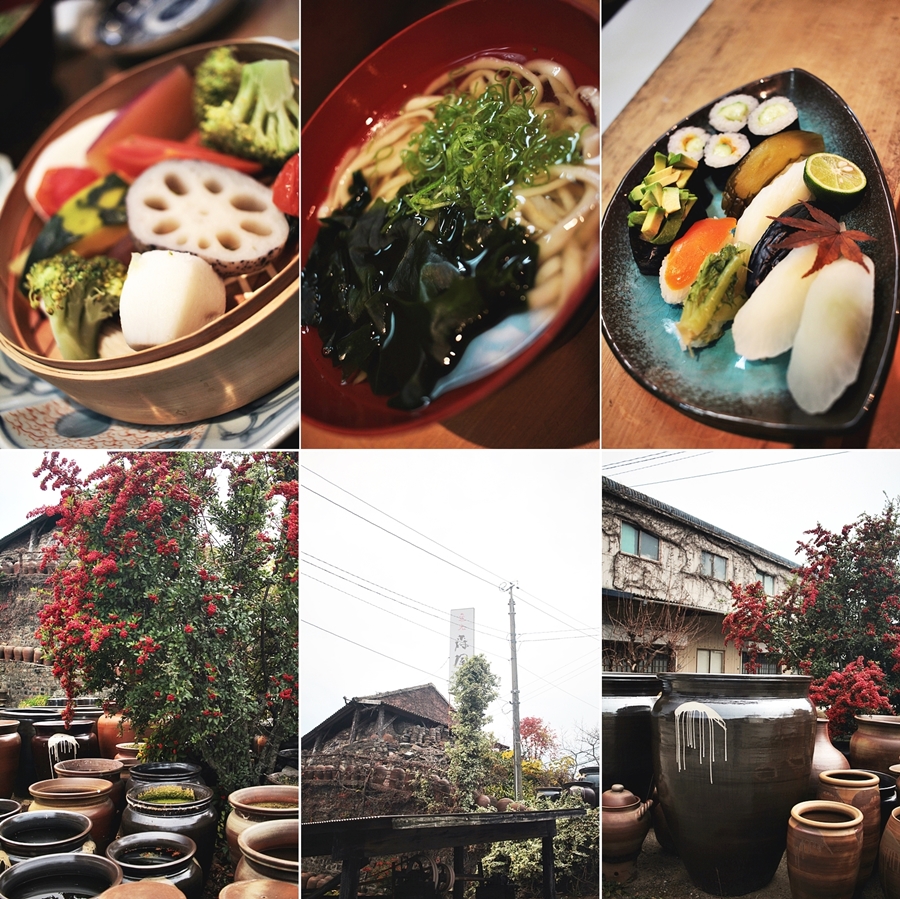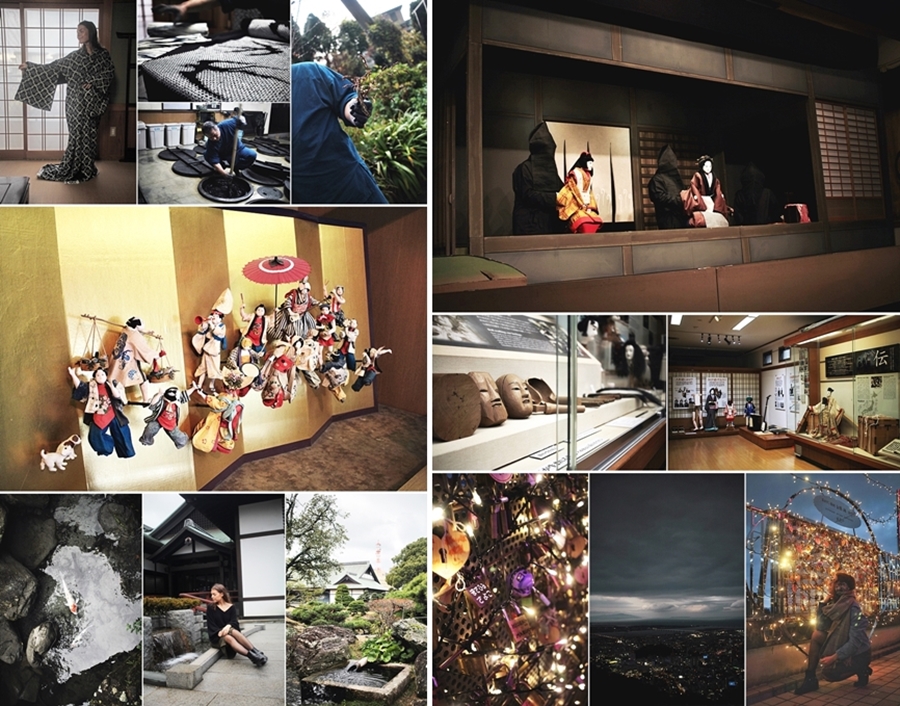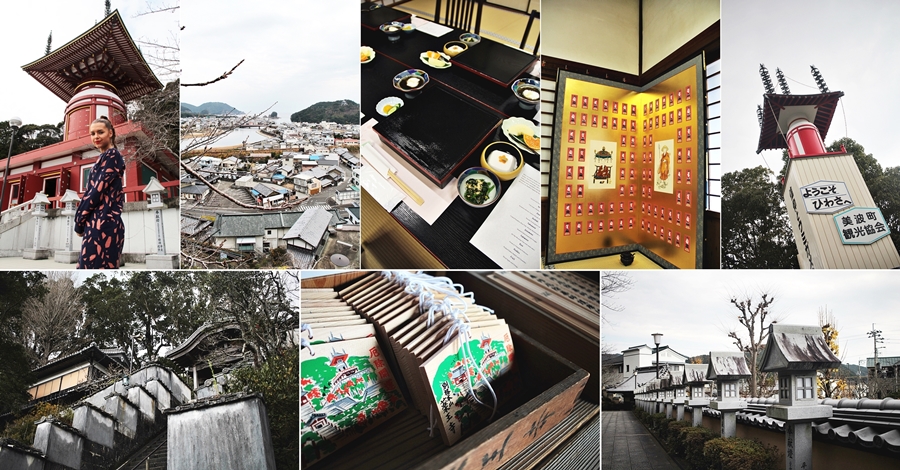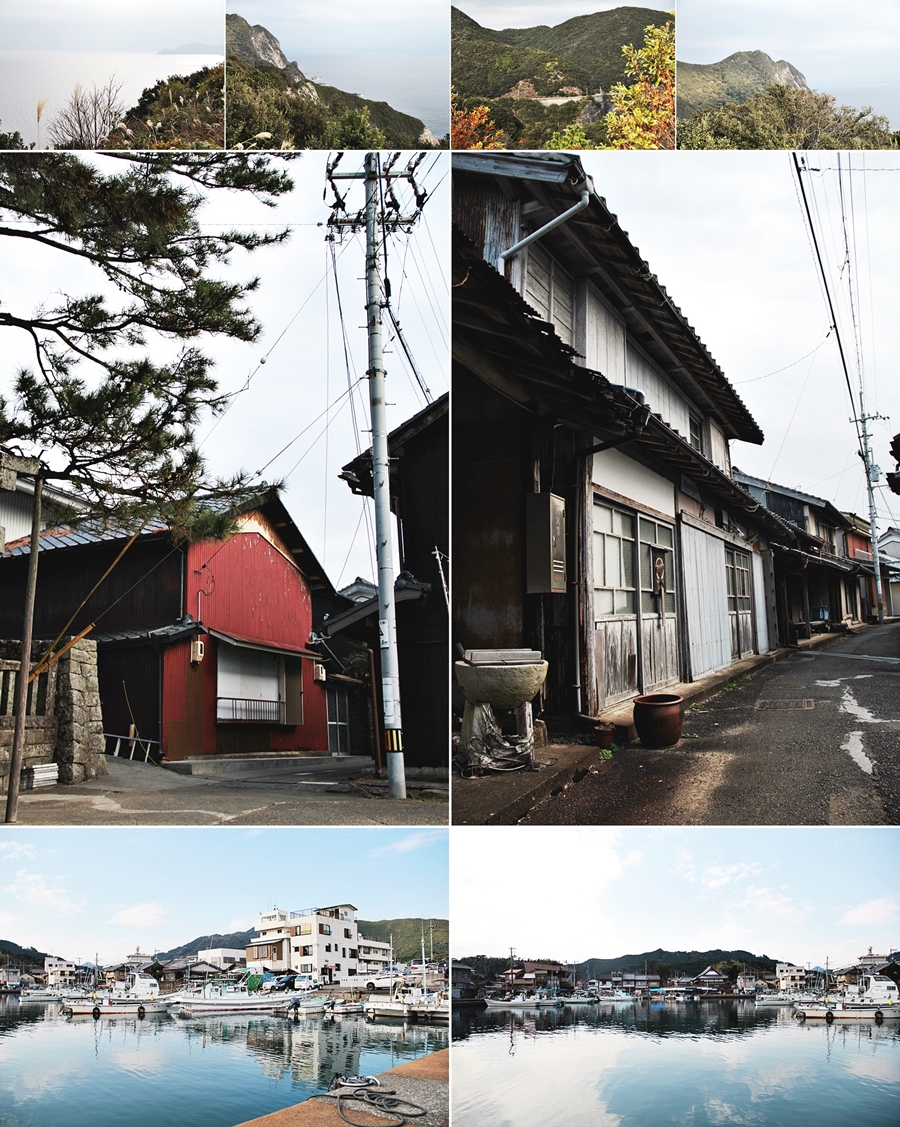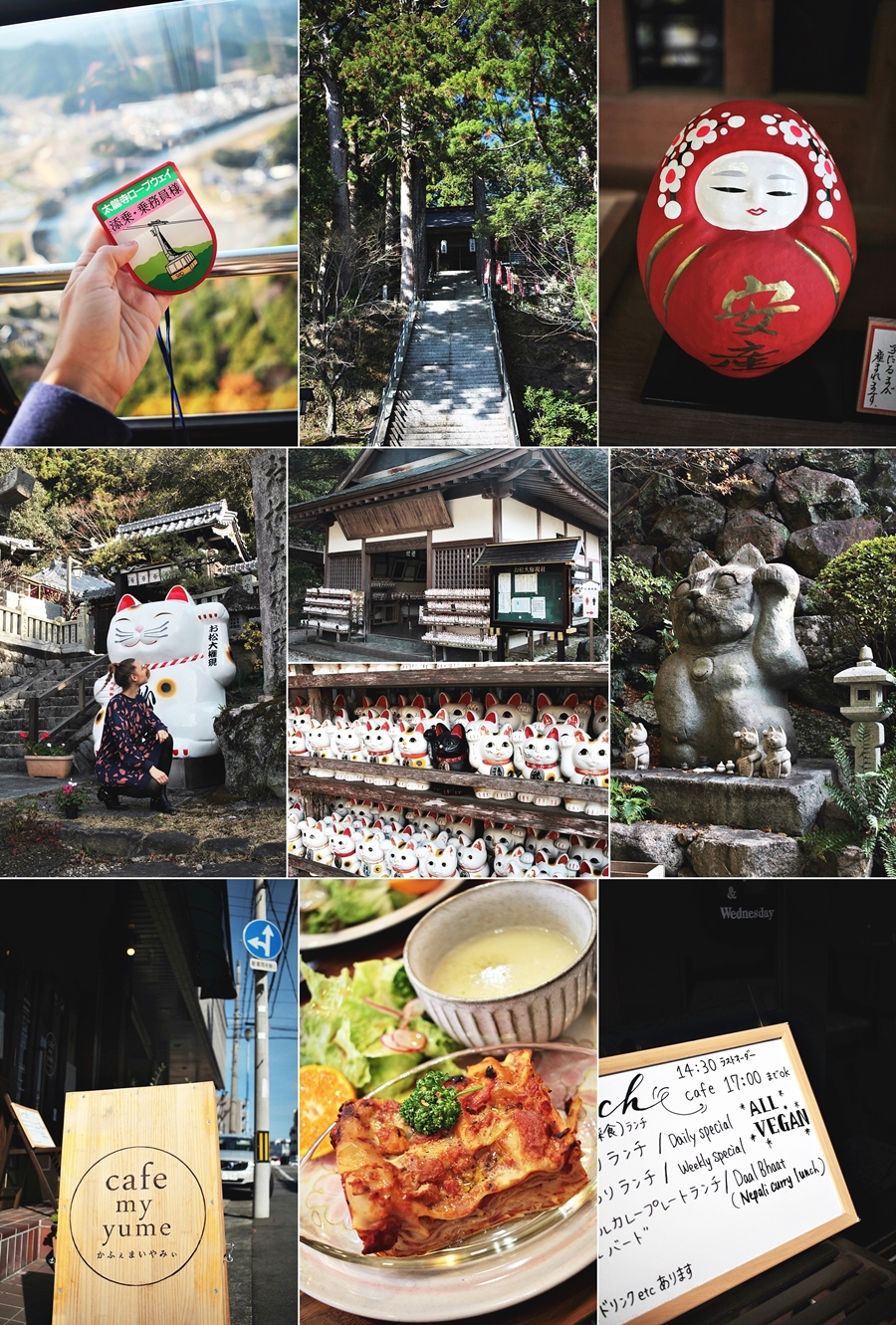Werbung/Press Trip
For a total of 3 days I had the pleasure to explore Tokushima prefecture. I was traveling all around, facing the cultural heritages, walking the pilgrim route, playing the puppet theater and so much more. This article gives you guys an overview about my adventures but there is even more to see and to do..
I was really excited to visit Tokushima prefecture for the first time ever. As I was previously staying in Kobe, I took the bus to Tokushima, where I was arriving in Naruto. I was really excited to explore the Naruto whirlpools for the first time ever. The Naruto Strait has a maximum depth of about 100 meters and has very few obstructions for its current. This current is called the main current. On the other hand, on both sides of the main current are shallower waters where the current flows much more slowly. The whirlpools occur when this main current and the slower currents on the coasts intersect with one another. Larger whirlpools can be up to 20 meters in diameter. When whirlpools occur, they appear, stay from a few seconds to less than a minute, and then disappear. This process repeats numerous times. Naruto swirls are recognized as one of the 3 biggest swirls in the world
Later on I arrived in Muyacho town, where I was strolling around and took some photos. I also discovered a German bakery which seems to be very popular, as most of the baked goods were sold out already when I arrived. After having lunch nearby I was heading to the Oasahiko Jinjya Shrine and the Naruto German House, known as first place “ Naruto-Daiku ” performance.( Beethoven’s Ninth Symphony ). Japan participated in World War I in 1914, attacked Qingdao, which used to be a German concession, and captured approximately 4,700 German soldiers. Among them, approximately 1,000 German soldiers were sent to the Bando prisoner-of-war camp (the address at that time was Bando-cho, Itano-gun, Tokushima Prefecture). The director of the camp, Matsue Toyohisa and other staff, who looked after the camp, respected German prisoners’ human rights and allowed their autonomy as much as possible; therefore, the prisoners could have a free and relaxed life in the camp. In the camp, various activities such as music, sports and drama were carried out, and interaction with local residents was actively conducted. The museum is giving a greater insight into this important bond.
Tokushima Prefecture considers Beethoven’s Symphony No.9 as one of the main four themes of “Awa Culture” and has been disseminating the attraction of the Ninth Symphony through the National Cultural Festival. The festival is going to take place for the second time in Tokushima, which will be the first time it has been held in the same prefecture. The year 2018 is the 100th anniversary of the first performance of the Ninth Symphony in Asia. We have been disseminating the attraction of Tokushima Prefecture’s Ninth Symphony in Japan and the world by holding concerts under the project “Hop Step Jump”. The concert to celebrate the 100th anniversary of the first performance of the Ninth Symphony in Asia which was hold on February 12, 2018.
Unique for Tokushima prefecture is the 88 temple pilgrim route. People need approximately 2 months to cross the whole path. Tokushima is well known for its Ryozenji is the starting point for the popular 88 temple pilgrimage around Shikoku. The temple here was founded in the 8th century by the monk Gyoki under the direction of Emperor Shomu to offer prayers. The pilgrim route has a total length of 1142 km divided in four stages. The 88 temples sacred journey of ascetic training gives opportunity to reexamine oneself. There are different ways of “walking” the route, per example by cycle, car, public transport and so on. Some people however do truly walk.
Before checking into my hotel, I had a stop at two more locations, the Honke Matsuura Brewery and Moritoki of Otani Baked Pottery. In 1804, founder, Naozo Matsuura began brewing sake in the city of Naruto in Tokushima Prefecture. Honke Matsuura Brewery Established 1804. A brewery producing sake, including the “Narutotai” and “Sudachi-shu” brands, and at over 200 years old, Tokushima Prefecture’s oldest distillery. “Narutotai Junmai Mizu-to-Kome” was awarded the “Ultimate Gold Prize” for junmai sake at the 32nd International Wine Challenge 2015.
On the following day in the morning I was heading to Hon-Aizome Yano Factory, traditional Blue Tokushima’s Indigo. Awa indigo dye that creates beautiful color appeared at markets all over the country from the Edo Period (1603–1868), and brought enormous wealth to Tokushima’s economy and culture. Awa indigo is still produced in Tokushima by the indigo dye artisans, who are passing on the tradition. The production volume has a majority of the share in Japan, and Awa indigo supports JAPAN BLUE, the Japanese indigo color. “Sukumo” is the natural dye made of indigo, a plant belonging to Polygonaceae, (knotweed family), whose leaves are dried and fermented. Natural indigo dye products are made of indigo dye liquid using Sukumo, and Sukumo produced in Tokushima is called Awa indigo.
It takes almost a year to produce Awa indigo: indigo seedlings are planted in spring; the grown plants are reaped in summer; and their leaves are ground finely, dried well and piled up in facilities called “Nedoko” (literally means bed). Only water is sprinkled on the piled indigo leaves (between several hundred kilograms and several tons), and they are fermented under meticulous temperature control for approximately 100 days to be ready as Awa indigo.
Also very famous for Awa is the puppet play. Ningyo Joruri is a puppet show created by the fusion of Dayu (a story teller using Gidayu-bushi, ballad drama music), Shamisen (three-stringed instrument) and Sannin-zukai (three puppeteers for each puppet). Characteristics of Tokushima’s Ningyo Joruri are its unique performance and larger-sized puppet heads for outdoor theaters built in the precincts of temples (Rural Community Theaters). “Awa Ningyo Joruri” has been designated as National Important Tangible Folk Cultural Property. Tokushima Prefecture endeavors to pass on through the generations and develop “Awa Ningyo Joruri”. The puppet shows are performed in Awa Jurobe Yashiki and Rural Community Theaters in various areas in Tokushima Prefecture. Awa Ningyo Joruri puppet shows are performed every day in Awa Jorobe Yahiki.One can thoroughly enjoy Japanese sensitive art: Dayu tells a story with a full range of emotions; Gidayu-Shamisen supports the story teller with a variety of timbre beyond musical notation; and each Ningyo (puppet) is manipulated by three puppeteers, which is absolutely unique.
Mainly “Keisei Awa no Naruto” is performed there, which is associated with Tokushima. The performance is a story based on a family trouble and uses the name of a village headman, Bando Jurobe, who was executed in 1698 without an obvious criminal charge and became a victim of the Han’s (feudal domain) politics. The theater is located in the former residence of Bando Jurobe, a place associated with “Keisei Awa no Naruto”.
The world famous Awa Dance has a 400 years’ history. The story of its origin varies. It is said that Awa Dance was performed often around the time Hachisuka Iemasa, a feudal load of Tokushima, entered Tokushima in 1586, and hoarded the wealth produced by the indigo and salt trades. Later, indigo traders played an active part and made the dance even more gorgeous year by year. Awa Dance was established in the civil society and flourished as a free-form of mass entertainment. Especially, after World War II, it developed rapidly as a symbol of reconstruction. Nowadays, Awa Dance is well-known around the world as a representative of Japan’s traditional arts. Currently, the “Naruto City Awa Odori” takes place on August 9 every year as the first Awa Dance festival and other Awa Dance festivals are held later in various places in Tokushima Prefecture. The busiest and most popular one is the Awa Dance festival in Tokushima City which takes place between August 12 and 15 every year.
After joining the Awaodori Kaikan dance presentation, I headed to the peak of Mt. Bizan, by Bizan Ropweay. The large “Yoshino River” is the symbolic river of Tokushima City, prefectural capital of Tokushima Prefecture, and “Mt. Bizan” is the symbolic mountain of Tokushima City. Mt. Bizan earned its name as it resembles the shape of an eyebrow from all angles, and has been popular among citizens as the symbol of Tokushima City since the ancient period. A variety of views of Mt. Bizan by season makes towns in Tokushima even more attractive: Mt. Bizan glows hazy behind cherry blossoms in spring; enhanced deep green under gigantic clouds in summer; displays beautiful broad-leaved trees under the blue sky in fall; shows its summit on bright days in winter.
Its peak is 291 meters above sea level, and offers a panorama of Asan Mountains, the Seto Inland Sea and mountains in Kishu on a clear day. Mt. Bizan is also known as the best night view spot in Shikoku. There is a fence on which lovers lock their padlock pledging their eternal love. Mt. Bizan is a popular place for dating, too. Moreover one can find a monument of kaleidoscope with LED with a nickname of “Mayugekyo”. The height is 6 meters, the length and width of the top part is 3.6 meters and 3 meters respectively, and the pillar with the height of 2 meters supports the monument. It is one of the largest kaleidoscopes with LED in Japan. Through the one-meter diameter hole under the monument, you can look up at approximately 4,100 shining LED lights.
On the next morning I returned to the pilgrim route and headed for the 23rd temple followed by a traditional vegan lunch. It is said that this temple was built by Gyoki. Kobo-Daishi (Kukai) engraved the statue of Buddha of healing and medicine by bowing tree times every time when he was engraving in order to pray for the removal of disasters for himself and others. This is said to be one and only statue. It is said that when the fire occurred in 1188, the statue avoided the disaster by flying to Mt. Tamazushi. When the temple was rebuilt and service was held, it returned and entered the Zushi (little cup-board like container) facing backwards. The statue is commonly called “Ushiromuki (turned backwards) Yakushi (Buddha of healing and medicine)”. It is also said that another statue was added so that there are two statues.
My next spot had been Tebajima, which is a small island in Tokushima prefecture. It is located 3.27km south of Mugi Port. The island itself has a length of 4k and only a few people do still live on this island. There are no cars and time stays still. I really recommend visiting this island in summer time.
Later during this day I was heading for a Zen Meditation at Jyomanji Temple. I could also view the temple during the night time, when all the lights were turned on and turned the temple into an even more magical place. The temple is also offering guests to stay (Ryokan).
The days in Tokushima prefecture were really packed and it came to my last day, when I was still visiting one more temple of the 88 Pilgrimage route. Tairyuji Temple, 21 of Pilgrimage route is accessible with Tairyuji ropeway the longest ropeway in western Japan with 2775m overall length, crossing 2 mountains. Foreigners have a 50% discount and pay only 1,300yen for a roundtrip.
An impressive Shrine that I was visiting was the Omatsudaigongen Shrine, which has a unique story. Once upon a time a village leader borrowed money from a rich man in order to save the village from starvation. After he paid the money back, he didn´t ask for a confirmation of his payment. Later on, the rich man denied to receive the amount of money payed back to him and soon the village leader died of poorness. His wife asked a higher instance for justice, which was punished with death, since she was only a simple woman and not allowed to consult this person. This lady however had a cat. The ghost of her cat looked after the corrupt people after she had to suffer death. She soon became a symbol for justice and this cat shrine was built for her.
Tokushima Prefecture is located in the east of Shikoku, faces to Kii Channel to the east, and is adjacent to Kagawa Prefecture, Kochi Prefecture and Ehime Prefecture to the north, south and west respectively. Mountainous districts make up approximately 80% of Tokushima’s total land area of 4,146.65 km2. Quite a few mountains in the districts exceed 1,000 m in height. The highest peak in Tokushima as well as the second highest in Shikoku is Mt. Tsurugi in the Shikoku Mountains with its altitude of 1,955 m. Tsurugi Mountains with Mt. Tsurugi at their center form a watershed dividing Tokushima Prefecture into north and south. The Yoshino River flowing along the north side of the Tsurugi Mountains rises from the distant Kochi Prefecture, flows into Tokushima Prefecture forming the steep Oboke and Koboke Gorges. The river then runs eastwards from Miyoshi City and flows wider, giving way to the wedge-shaped Tokushima Plains.
The Sanuki Mountains with relatively low peaks are situated in the north of the Yoshino River. At the foot of the mountains, an alluvial fan spreads out, and the altitude of the land is high. Rice paddy area spreads in the lowlands downstream of the Yoshino River, same as the lowlands downstream of the Katsuura River and Naka River. There is a rich forest area in the southern slope of mountains in the watershed and not much wide flat ground. In the south of Anan City and southward, the sheer rock coastline with the mountains facing directly to the sea contrasts remarkably with the sandy beaches of the northeast. The deep ocean makes this area perfect for ports and harbors.




